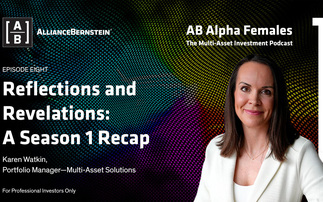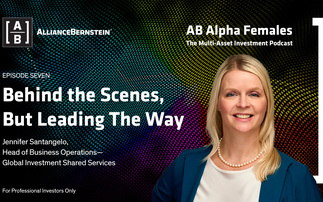PARTNER INSIGHT: Multi-asset investing is increasingly on the radar of fund selectors. From a UK perspective, new regulation stemming from the Retail Distribution Review has been a key driver behind the uptake in these solutions.
What is more, when we account for today's low yield environment, it is little wonder that the investment community and their clients are changing how they think about investing - or indeed that asset managers have been responding accordingly with more outcome-focused, multi-asset investment solutions.
Speaking to Investment Week, Emiel van den Heiligenberg, Head of Asset Allocation and one of the lead managers on the L&G Multi-Asset Target Return (MATR) Fund, says "the group's world-class index capability forms an ideal backdrop for investing in multi-asset solutions as it allows us as asset allocators to create cost efficient client solutions."
He adds: "Adding value in markets is difficult and macro investing is no exception. This makes teamwork and specialisation crucial. It is impossible to be an expert in everything and it doesn't make sense for everyone to analyse the same data or the same news item."
LGIM has a large team of experts from different backgrounds including the IMF, central banks, hedge funds, investment banks and asset managers.
The group's economists analyse the macroeconomic environment, strategists come up with the best trade ideas, and the portfolio managers focus on the balance of risk and return in specific client portfolios.
Moreover, Van den Heiligenberg says: "We work closely with our colleagues in index, trading, fixed income and equities, which means the investment team can strive for long-term investment growth through a variety of active and index investment strategies."
Investment approach
Sitting in the IA Target Absolute Return Sector, MATR seeks to achieve a low equity beta with a cash plus 5% return target. Alongside this objective there are three risk controls which make the Fund quite unique.
The first one is to manage volatility in a range between 6% and 10%. This encourages the Fund to have a reasonable amount of active positions on.
However, other investors may have been recklessly prudent by not taking enough risk and missed out on good asset class performance.
The second control is to keep the equity beta below 0.4, both over a three-year rolling period. This helps to avoid being overly reliant on equity markets.
Then the third risk control is to limit the downside participation to less than 40% in any sharp and significant equity drawdown.
This should provide a strong outcome for investors, as the Fund aims to provide an absolute return, diversification, and protection in a drawdown.











